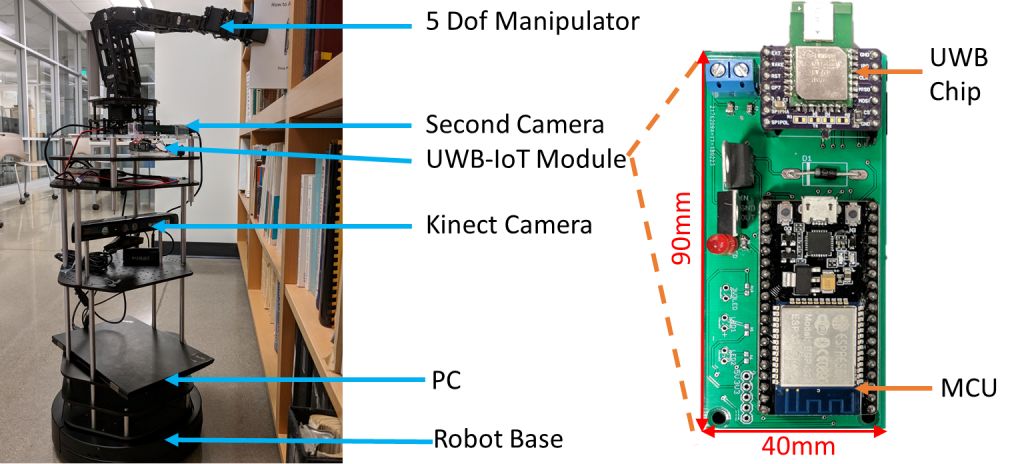The emerging simultaneous localization and mapping (SLAM) techniques enable robots with the spatial awareness of the physical world. However, such awareness remains at a geometric level. We propose an approach for quickly constructing a smart environment with semantic labels to enhance the robot with spatial intelligence. Essentially, we embed UWB-based distance sensing IoT devices into regular items and treat the robot as a dynamic node in the IoT network. By leveraging the self-localization from the robot node, we resolve the locations of IoT devices in the SLAM map. We then exploit the semantic knowledge from the IoT to enable the robot to navigate and interact within the smart environment. With the IoT nodes deployed, the robot can adapt to environments that are unknown or that have time-varying configurations. Through our experiments, we demonstrated that our method supports an object level of localization accuracy (0.28m), a shorter discovery and localization time (118.6s) compared to an exhaustive search, and an effective navigation strategy for a global approach and local manipulation. Further, we demonstrated two use case scenarios where a service robot (i) executes a sequence of user-assigned tasks in a smart home and (ii) explores multiple connected regions using IoT landmarks.
Autonomous Robotic Exploration and Mapping of Smart Indoor Environments With UWB-IoT Devices
Authors: Tianyi Wang, Ke Huo, Muzhi Han, Daniel McArthur, Ze An, David Cappeleri, and Karthik Ramani
In Proceedings of AAAI Spring Symposium Series 2020

Tianyi Wang
Tianyi Wang is a Ph.D. student in the School of Mechanical Engineering at Purdue University. Before joining the C Design Lab, Tianyi received his bachelor's degree from the Department of Precision Instrument in Tsinghua University, Beijing in 2016. Tianyi's current research interests focus on utilizing the technology of robotics, augmented reality as well as deep learning in the area of Human-Computer Interaction.

